"DIOR EN ROSES"
AT THE CHRISTIAN DIOR MUSEUM IN GRANVILLE
The exhibition has been extended until 2 January 2022
31 October 2021
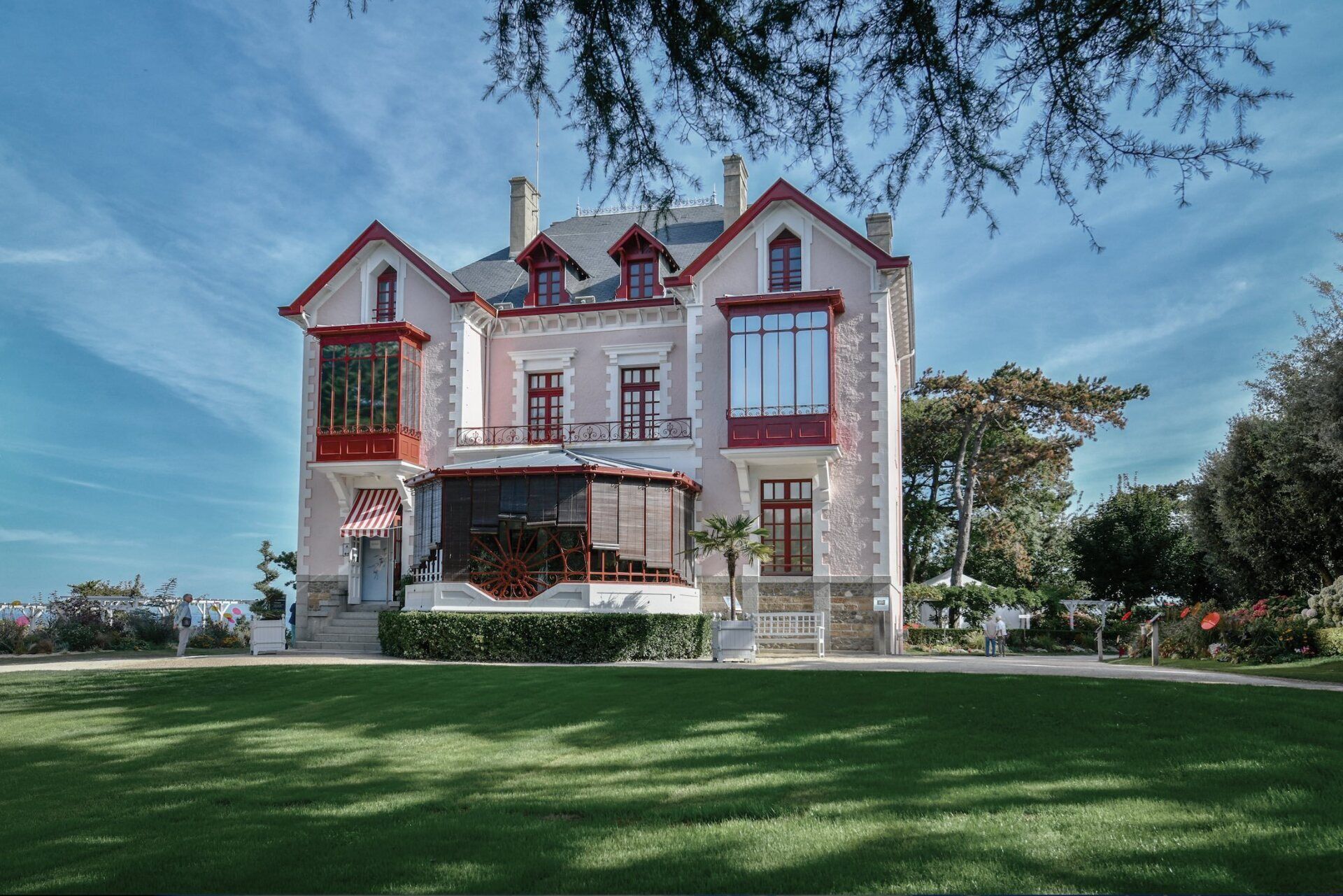
Villa Les Rhumbs, musée Christian Dior, Granville.
© Benoit Croisy, coll. ville de Granville
The exhibition "Dior en roses", on show at the Christian Dior Museum in Granville, has been extended until 2 January 2022. The exhibition takes place in the Villa Les Rhumbs in Granville, the childhood home of designer Christian Dior, and is dedicated to the rose, one of his favourite flowers.
The Christian Dior Museum offers the public the opportunity to discover the creations of Christian Dior and his successors through the medium of roses. Haute couture models, perfumes and accessories from the Avenue Montaigne fashion house, as well as paintings, sculptures, photographs, decorative art objects, etc. are all variations on the flower and its colour, from the lightest to the most delicate pink.
"If the rose is a flower, the pink is a colour. First of all, it is the colour of the family's villa Les Rhumbs,
"plastered in a very delicate pink"
Christian Dior
Pink is also the colour of childhood, the colour of Les Petites Filles Modèles, the famous novel by the Comtesse de Ségur published in the Bibliothèque Rose, which inspired a dress by Christian Dior in 1939, who was then working as a pattern cutter for the fashion designer Robert Piguet.
From pale pink to blush pink, sometimes associated with the world of little girls, sometimes with that of the femme fatale, pink is used by Christian Dior and his successors on haute couture models and on the accessories selected for the exhibition: Jewellery, scarves, bags, shoes, etc. The designers exhibited are: Yves Saint Laurent, Marc Bohan, Gianfranco Ferré, John Galliano, Raf Simons and Maria Grazia Chiuri.
Finally, the exhibition also establishes a close link between the family history and the designer's career by highlighting the extraordinary personality of his younger sister Catherine, who made flowers her profession and was both his support and inspiration.
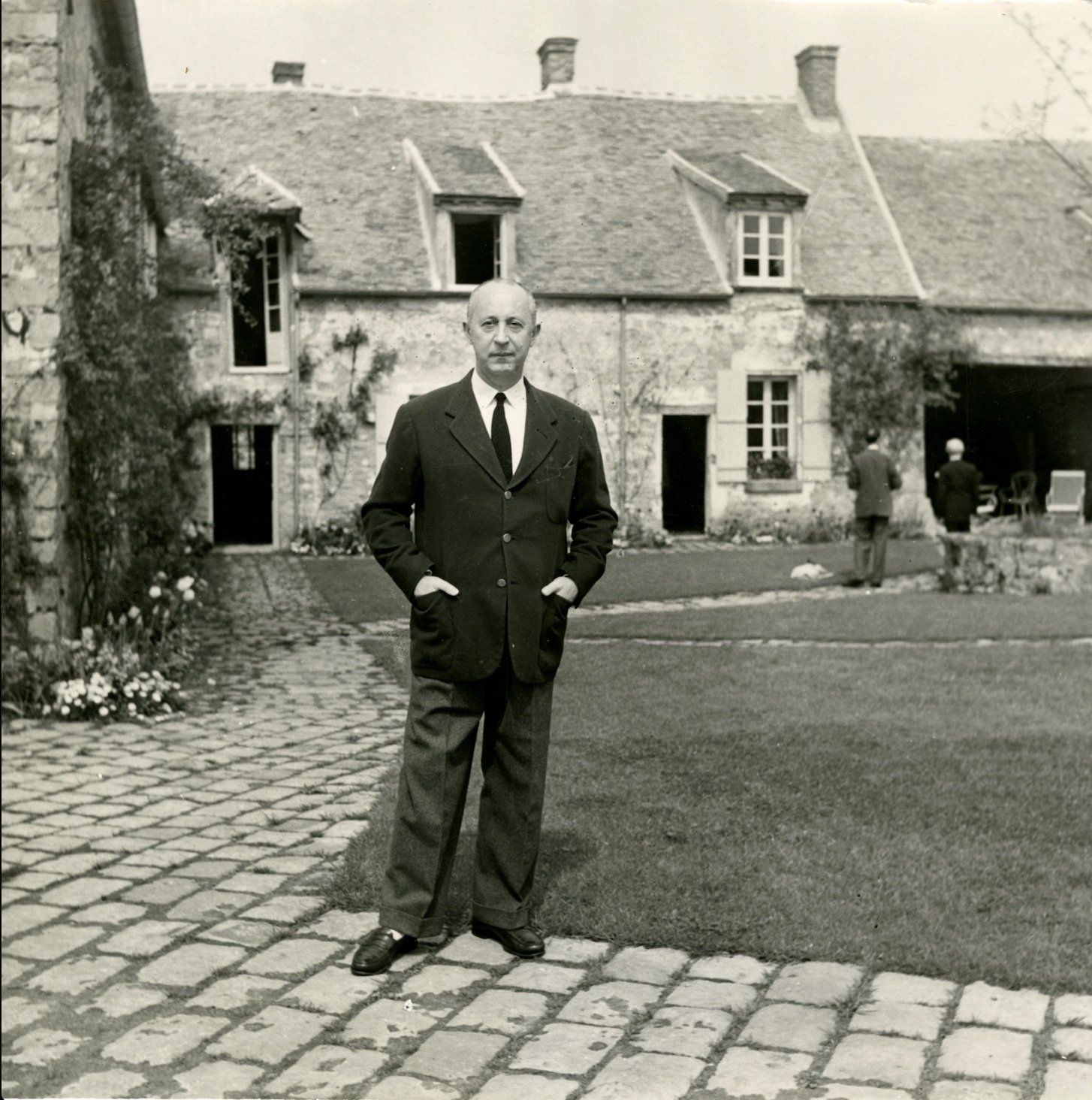
Christian Dior dans la cour du Moulin du Coudret, à Milly-la-Forêt. Collection musée Christian Dior, Granville.
© Droits réservés
FROM DIOR HOUSE TO CHRISTIAN DIOR MUSEUM
VILLA LES RHUMBS
"The house I grew up in was plastered in a very soft pink, mixed with grey gravel, and these two colours have remained my favourite shades in couture."
Christian Dior
Built in the late 19th century, Villa Les Rhumbs was purchased by Christian Dior's parents in 1906, a few months after the birth of their son the year before. Villa Les Rhumbs takes its name from the maritime term for the thirty-two sections of the compass rose. The bourgeois Dior family had deep roots in Granville, where Christian Dior's father ran a fertiliser factory. Madeleine, Christian Dior's mother, saw to it that the house was converted into a bourgeois seaside villa in the style of the Belle Époque. She also had the garden laid out, with young Christian helping her. Even as a teenager, Christian Dior gave himself the role of architect and designed the fish pond, the pergola and the garden furniture.
In 1911, the Dior family moved to Paris, but returned to Granville for the summer. Ruined by the crisis of 1929, Maurice Dior was forced to sell the villa. In 1938, the town of Granville acquired the villa for its garden and planned to raze the building to the ground to create a water feature, a project that never came to fruition.
Much later, in the 1980s, the idea of making the Villa Les Rhumbs a place of remembrance dedicated to Christian Dior was born on the initiative of the curator Jean-Luc Dufresne (1949 - 2010), great cousin of the fashion designer. In 1987, the Présence de Christian Dior association was founded to carry out renovation and development work.
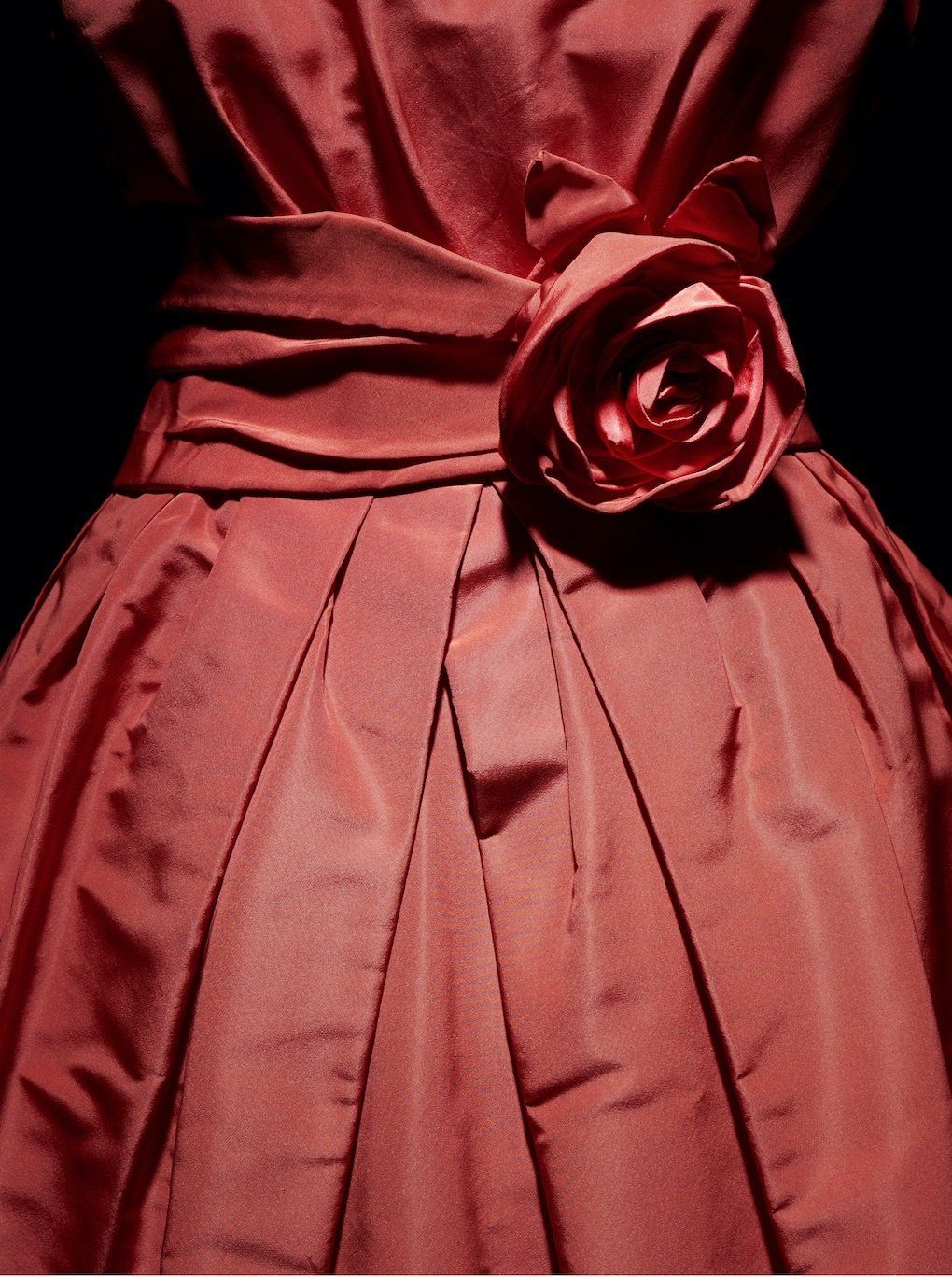
Robe Manuela en faille de soie corail ornée d’une rose de même tissu à la ceinture, collection Haute Couture printemps-été 1959, ligne Longue. Christian Dior par Yves Saint Laurent. Collection musée Christian Dior, Granville.
© Laziz Hamani

Collier Bal de Mai en or blanc, or jaune, diamants, diamant brun, diamants roses, diamants lilas, diamants mauves, opale rose et émeraudes. Dior Haute Joaillerie par Victoire de Castellane, 2011.
© Dior
CHRISTIAN DIOR AND THE ARTISTS
The young Christian became enthusiastic about artistic life in the capital as a child, teenager and then young man. A constellation of artists, musicians, writers and poets close to him, including the composer Henri Sauguet, the poet Max Jacob, the decorator Christian Bérard or the painters Raoul Dufy or Léonor Fini, gathered around the "lighthouse Jean Cocteau who, dominating all avant-garde attempts, illuminated everything, explained everything". Thus introduced to all forms of artistic expression, he decided to open a gallery at the end of the 1920s, thus promoting the work of his artist friends: "Our aim was to exhibit the masters we admired the most: Picasso, Braque, Matisse, Dufy, and the painters we knew personally and already held in high esteem: Christian Bérard, Salvador Dali, Max Jacob, the Bermann brothers, etc.". When he became a fashion designer, these works were to become an important source of inspiration for Dior. In the Roaring Twenties, the rose was a popular motif for fashion and decoration, and it is also the flower of poets.
THE ROSE AND SURREALISM
Christian Dior exhibited Salvador Dalí as one of the first artists in his gallery. The designer approached the Surrealists with the theme of the rose in his couture creations, for whom the queen of flowers, like the sea, was an inexhaustible source of inspiration. Architecture, surrealism and haute couture came together when Christian Dior said he wanted "my clothes to be 'constructed', modelled on the curves of the female body, stylising its curves".
MISS DIOR
The Miss Dior dress model and the perfume of the same name are dedicated to Catherine Dior, the fashion designer's sister. The name was given by Mitzah Bricard, the fashion designer's muse, who exclaimed "Look, there's Miss Dior!" when she saw Catherine arrive at the salons at 30 Avenue Montaigne.
The woman with the extraordinary career, who was both a devotee and muse of the couturier, made flowers her profession. She inspired the composer Henri Sauguet to write the "Miss Dior Impromptu Waltz". Catherine was also involved in the French Resistance and a collection of blue, white and red Baccarat crystal bottles in the museum is dedicated to this.
The Dior family retreated to the region of Callian in the Var in 1940, some twenty kilometres from Grasse, where Catherine continued to work for the perfume industry. In 1950, Christian Dior acquired La Colle Noire, just a few kilometres from his sister's house, with the same project of planting and growing flowers in the Grasse tradition.
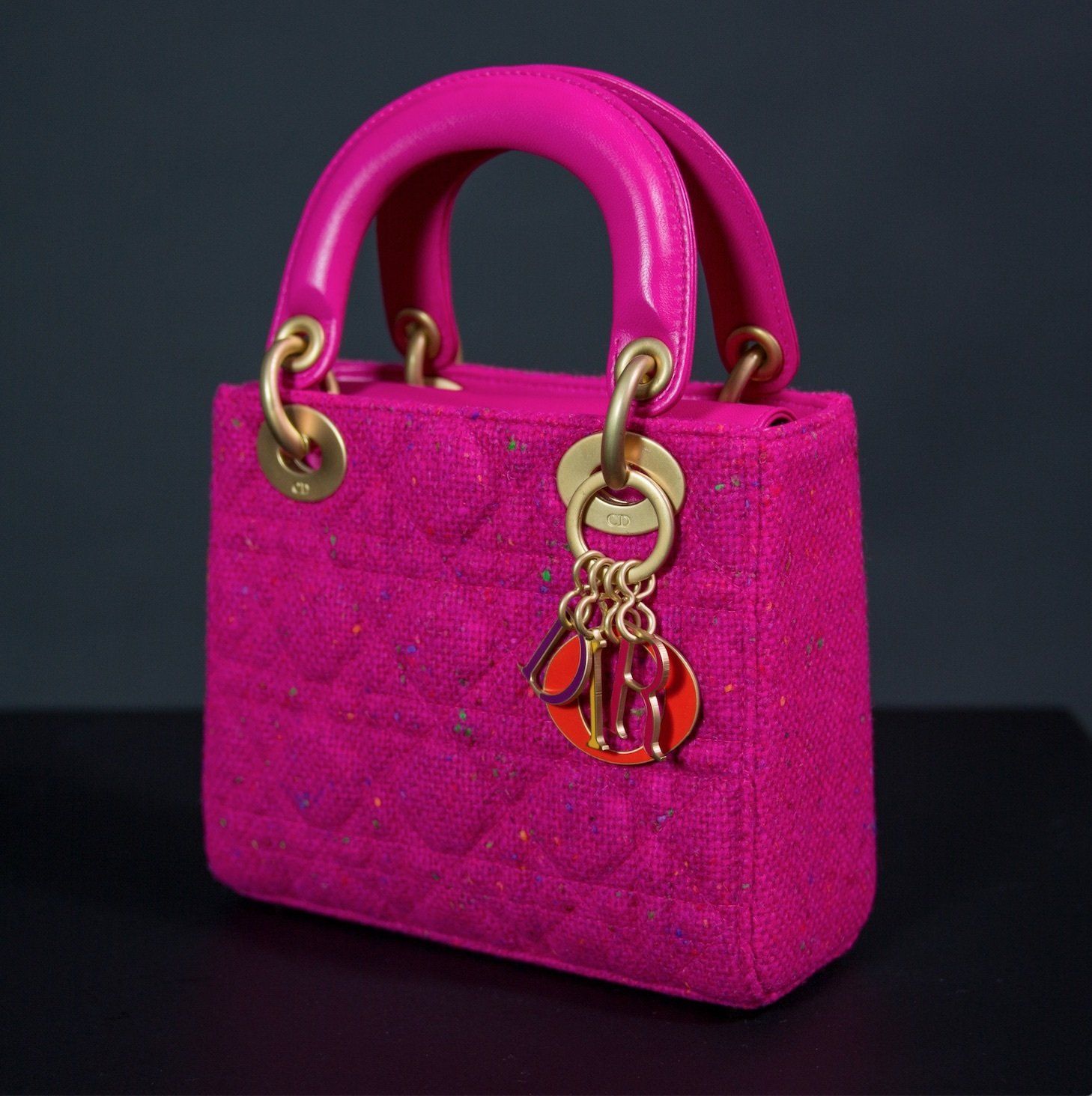
Sac à main Lady Dior, Christian Dior par John Galliano, 2000.
Collection musée Christian Dior, Granville.
© Benoit Croisy, coll. ville de Granville
PINK - THE SOFTEST OF ALL COLOURS
"Every woman should have pink in her wardrobe. It is the colour of happiness and femininity. I like it for scarves and blouses, but also for girls' dresses.
It's a beautiful colour for suits and coats and wonderful for evening dresses."
Christian Dior

Robe de grand gala Tableau Final, collection Haute Couture printemps-été 1951, ligne Naturelle. Christian Dior. Photographie de Willy Maywald colorisée.
© Association Willy Maywald/Adagp, Paris 2021
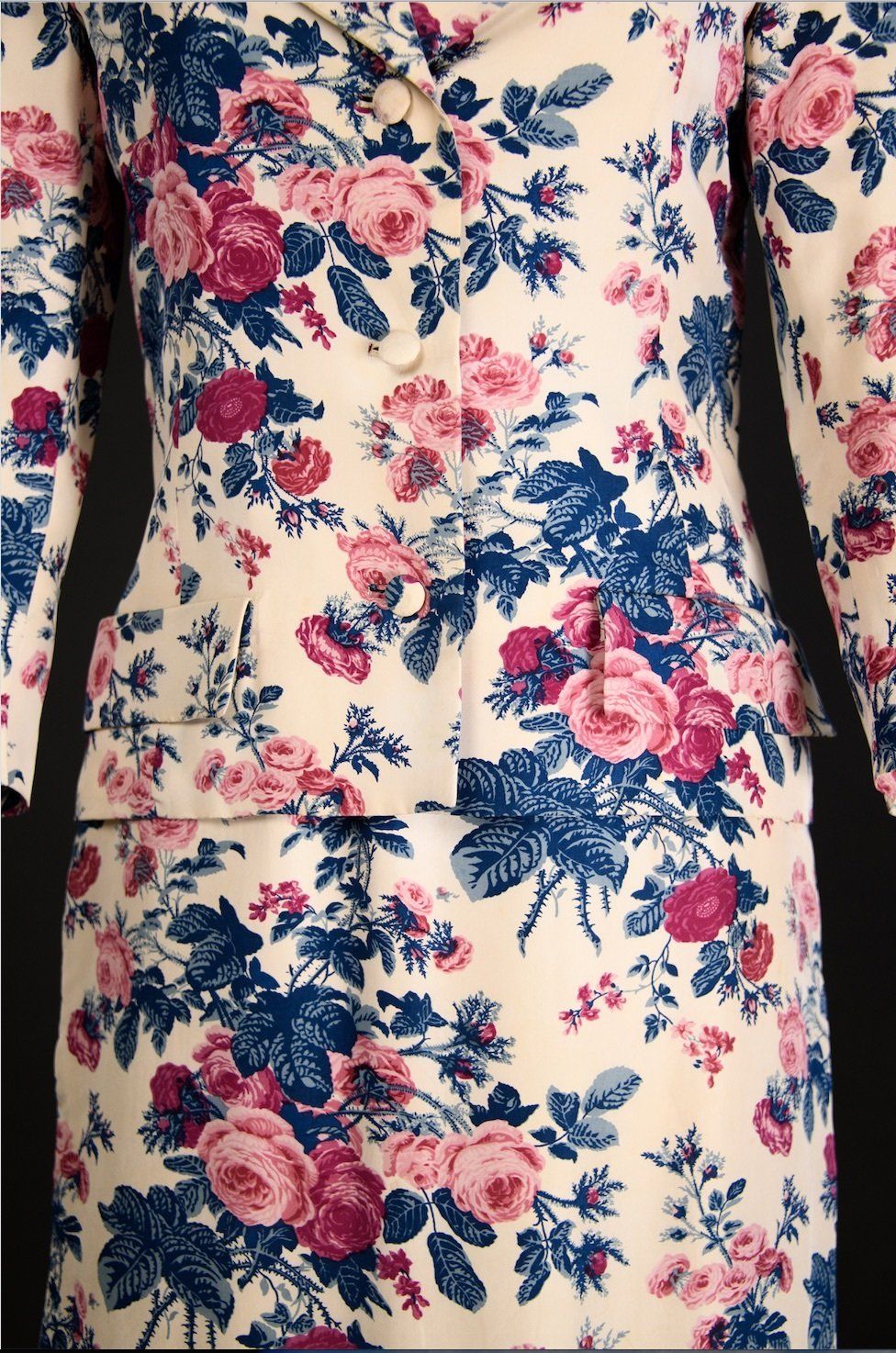
Ensemble Antibes, Christian Dior, collection Haute Couture printemps-été 1955, ligne A. Collection musée Christian Dior, Granville.
© Benoit Croisy, coll. ville de Granville
THE MUSEUM
It was at the suggestion of the curator Jean-Luc Dufresne, the fashion designer's great cousin, that the idea of turning Les Rhumbs into a place dedicated to the memory of Christian Dior was born. The exhibition "Christian Dior, the Other" at the Richard Anacréon Museum of Modern Art in Granville in 1987 led to the creation of a collection consisting initially of donations from the designer's family, in particular his two sisters Catherine and Jacqueline, and from collaborators. This was supplemented by purchases from the city of Granville by the curator. From 1991, the year the Présence de Christian Dior association was founded, improvements were gradually made. Until 1995, the town of Granville made the purchases, while the association appealed for donations. Since 1995, the Présence de Christian Dior association has been making purchases with the help of Dior Couture and Parfums Christian Dior, as well as the LVMH Group, the City of Granville and the Regional Museum Acquisition Fund.
The creation of "showrooms" in 1997 made it possible to present costumes and accessories in the best possible conditions and to open the villa to the public on a regular basis. To mark the centenary of the designer's birth in 2005, major works and an exhibition entitled "Christian Dior, Man of the Century" are on display.
CHRISTIAN DIOR
Christian Dior was born in Granville, Normandy, on 21 January 1905, the son of a family that had made its fortune in the manufacture of agricultural fertilisers. His parents foresaw that he would become a diplomat: he gave up his dream of a career as an architect and began studying at the Institut d'Etudes Supérieures in Paris. In 1928, he opened an art gallery with Jacques Bonjean. In 1931 Christian Dior lost his mother and his father was ruined. In 1932 he joins Pierre Colle's gallery. The following difficult years are marked by illness and financial difficulties. Encouraged by his friends, Christian Dior, a talented draughtsman, learns fashion illustration and sells his sketches to fashion designers, couturiers and newspapers such as Le Figaro. In 1938 he became a pattern cutter for Robert Piguet, and in 1941 for Lucien Lelong.
In 1946 he founded the fashion house Christian Dior together with the industrialist Marcel Boussac. On 12 February 1947, the first collection was a great success. It triggered a revolution in fashion, christened the "New Look", because the silhouette with its flared skirts and high-cut waists changed the codes of fashion and femininity. The international press made Dior a world-famous name within a few days. The couturier quickly expanded his fashion house by launching perfumes and accessories and, from 1948, conquered the international market, first in the United States. When Christian Dior died in 1957, he was the most famous fashion designer of his time.
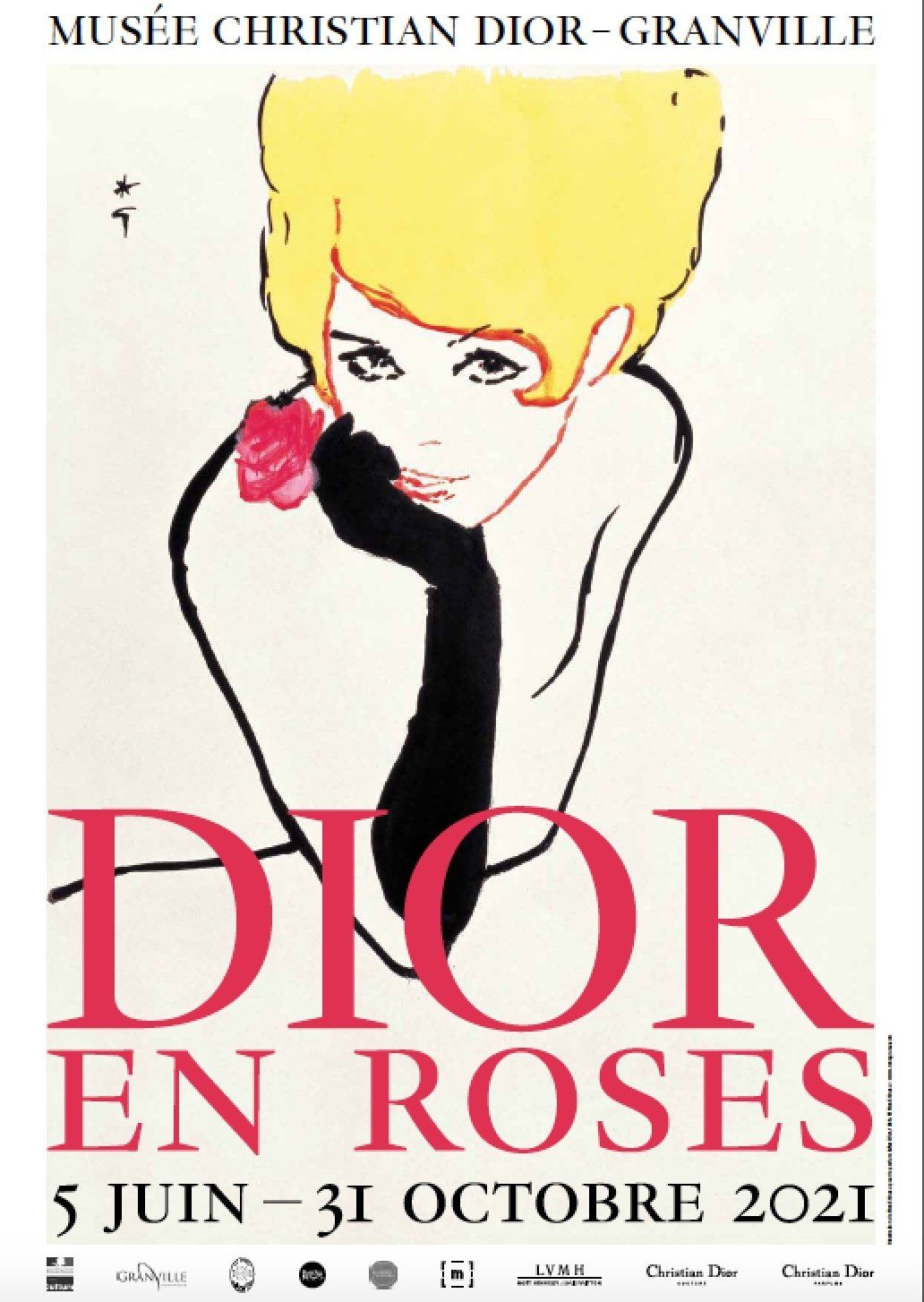
Illustration de René Gruau pour le parfum Miss Dior, 1966.
© René Gruau - www.renegruau.com
MUSÉE CHRISTIAN DIOR
Villa Les Rhumbs
1, rue d’Estouteville 50400 Granville
Tél. : 02 33 61 48 21 musee@museechristiandior.fr
By. G
31 October 2021


